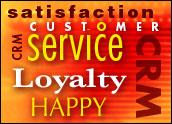
In a town renowned for big bets and high rollers — called “whales” by casino management — Harrah’s laid down the biggest bet of all on June 13th when it concluded its merger with Caesars Entertainment. Harrah’s paid US$1.87 billion in cash and US$3.27 billion in stock, also assuming $3.86 billion in Caesar’s debt. With the merger, Harrah’s has over 40 properties in 12 states.
Harrah’s now controls 17,600 rooms in Las Vegas alone, and has the highest asset utilization rate (this is the EBITDA on room assets per night) in one of the most competitive hotel markets in the nation. Harrah’s room occupancy hovers in the 90 percent range while the seasonally adjusted average is just above 70 percent.
What’s at the center of this merger is a bet by Harrah’s management that their Total Rewards customer loyalty program is a perfect fit for the Caesar’s customer base.
Achieving this level of financial performance underscores just how effective loyalty programs can be for motivating repeat purchasing. Loyalty programs also deliver critical data that’s needed for managing customer segmentation — a critical link in the Harrah’s strategy of catering to both high-rollers and small but steady gamblers with one set of programs. To get a sense of just how much data is available from the research surrounding a customer loyalty program, check out Harrah’s annual survey of the American gambler.
Doubling Down on Loyalty
During a recent vacation in Vegas, I noticed the buzz around this merger is pervasive — you literally can’t pick up a magazine or newspaper and not read about it. What is so intriguing is the affect the entire merger is having on its own — and its competitors’ — loyalty programs. Friends in Vegas say that Harrah’s is betting heavily that its Total Rewards customer loyalty program will be a significant factor contributing up to 90 percent of the revenue projected for the combined firm. IT staffs at Harrah’s are already getting ready to start integrating with customer loyalty programs and processes at Caesar’s. This integration is central to the success of the merger.
Harrah’s has budgeted $130 million for the integration of loyalty programs with Caesar’s and expects 50 percent or more of the existing Caesar’s loyalty program to convert to Total Rewards within the next 24 months. Harrah’s success with loyalty programs is evidenced by its ability to grow its share of customers’ gaming budgets from 26 percent in 1997 to 43 percent in 2002 to 50 percent today. At last count, Harrah’s has 6 million active members who used their cards last year and 26 million overall.
Cultivating Relationships
After having heard and read so much about how loyalty programs are at the heart of the merger, I had to visit all the competitive casinos and check out their loyalty programs. Each hotel has a slightly different set of data they are after — mostly demographics and how often visits are for business versus vacations.
What’s most interesting is that opting in with an e-mail address generates the opportunity to get even more free offers in smaller hotels not integrated with larger ones. This must be attributed to the fact that they are finding direct mail has its limits while e-mail is proving more effective for seasonal promotions. Yet the offers were for rooms well below their going rate — a sure sign that many loyalty program participants are afraid of giving their e-mail addresses for fear of being spammed from these smaller hotels or worse, having their e-mail address sold.
What emerged from the research of all the loyalty programs in Vegas was the following:
- Integration is king. Immediately apparent is that there is a major push to integrate CRM, Sales Force Automation and all forms of response systems as they relate to hotels that are either owned by the same corporation or at the very least have partnerships with other firms. The push to integration is obvious.
- Strong relationships between integration, attractiveness and rewards. At minimal point levels, there’s several gifts that these programs deliver, and the higher the level of integration the better the gifts. Conversely the programs that had no integration didn’t offer any incentives for immediate further spending or gambling activity.
- Virtual couponing. This was an interesting strategy from the most integrated loyalty programs — you could use the loyalty card immediately to get 10 percent off all purchases. Attribute this to the fact that the data collected says a ton about whether you are a potential “whale” or a “guppy” (low spender in Vegas lingo).
- Platinum status fits a lifestyle, not vice versa. Just as airlines, other hotels, even bookstores have loyalty programs that incent you to become a top-tier customer — which even for affluent individuals requires a change in behavior — the loyalty programs in Vegas seek to become part of your lifestyle while you are there. It’s a subtle strategy but a very effective one. Watching some “whales” play poker one morning, it’s clear this is a passion for them — not a task they are doing to run up their points. The program fits the lifestyle and even rewards it.
Firing Your Customers Vegas Style
Loyalty programs also are excellent for segmenting customers, and there is a definite move towards segmentation in Vegas hotels, casinos, even restaurants and entertainment venues. The building crane could easily be called the city bird. A dozen or so dot the skyline this summer, all of which signal higher room capacity, entertainment attractions and gaming than before.
Yet in the middle of this growth you have to stop and wonder — how do you attract the most profitable customers and disincent the ones that aren’t. Sooner or later, Vegas will have to confront segmenting its guests by lifetime customer value. It’s a touchy subject there and my friends in IT don’t discuss it much — but the stats are there and it’s clear that local corporations are thinking about it.
It all boils down to answering the question of how you fire your customers Vegas style — and for upscale hotels that means the following, some of which was visible there this summer:
- When a premium hotel is overbooked, whales and high value loyalty programs customers come first. This rule also applies to Delta Airlines, where non-SkyMiles members get bumped early and often from flights to save seats for Medallion Club and even Delta employees. To preserve relationships with its best customers, Delta will fire non-customers on overbooked flights. One guy had booked a room via Expedia in a Vegas four-star hotel at a great rate and then got bumped from the room. Overbooked? Maybe. But more than likely the room could deliver a higher margin from a higher value loyalty member. Further, the front desk advised him to go to a competing hotel.
- Go big or go home. This is a strategy that works for entire companies that visit Vegas often. Four-star and higher hotels there look for the “repeaters,” and if your company has taken a block of rooms in the past or even a suite, consider using your company’s name when you book reservations to see if you can’t get better service due to segmenting on your organization’s previous total spending.
- Take loyalty program deals over booking on the site. One friend in IT says that there is tracking of which guests opt in to e-mails for specials and rarely if ever get bumped. Build up loyalty history early and often if you have a favorite destination with a hotel.
Bottom line: Vegas’ loyalty programs show the ROI of these strategies are driving up customer lifetime value and serving as a useful basis for customer segmentation. Witnessing subtle forms of customer segmentation there in just six days shows the power of loyalty programs to isolate profitable from unprofitable customers.
Louis Columbus, a CRM Buyer columnist, is a former senior analyst with AMR Research. He recently completed the book Getting Results from Your Analyst Relations Strategies, which is available on Amazon.com.















































